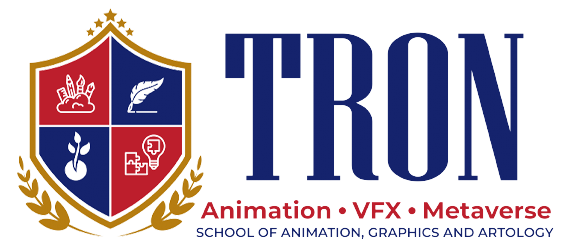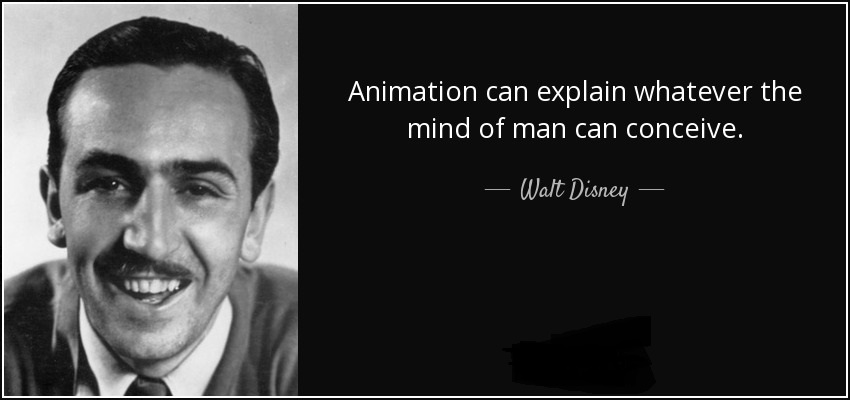

What do all these images have in common besides being cool?
They’re all 3D animated images.
But what is 3D Animation?
3D Animation is the art of using motion to bring characters and elements to life. This creates an illusion that these elements are moving through 3 Dimensional space. They appear to move, turn, and rotate like a real world object, giving us a 360 degree view.
3D Animation was originally used in animated movies, video games and TV shows. Pixar’s “Toy Story” is an excellent example of this.
Today, opportunities are limitless. 3D Animation is employed in a much larger way in every digital element. From Marketing and Architecture and Design to Medical imaging and instruments, 3D animation is all around us, and the need for 3D animators and designers is ever-growing.
In this article, you’ll find everything you need to know about 3D Animation!
How does 3D Animation work?
3D Animation can make a two-dimensional character or element look three-dimensional and look like they are in a three-dimensional environment. A skilled animator can trick you into believing what you see is real and have you reach out to the screen to touch it.
But how are 3D Animations created?
1. Modeling:
In the modeling phase, animators create 3D objects that will serve as the basis of their animation. It is the base that they will work upon and create a digital rendition of the same character or element. This modeling can be achieved by a 3D Modeling tool. A 3D mesh is made from a simple object, called a primitive, which is then shaped and refined to the desired figure.
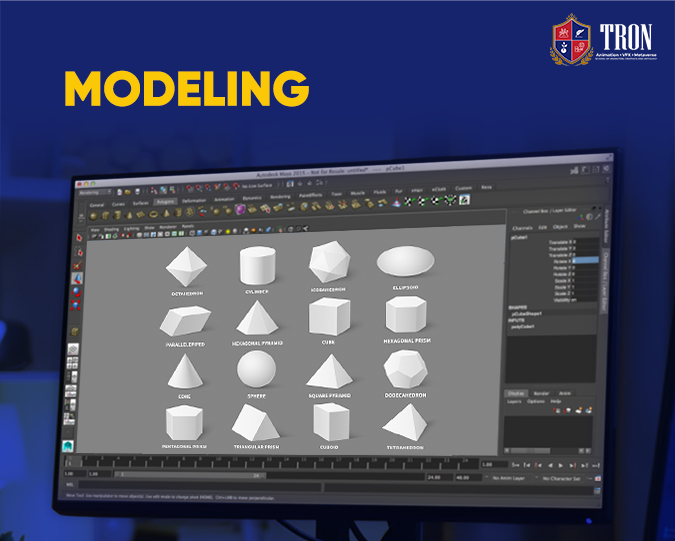
The 3D Models are then given details like texture and colour.
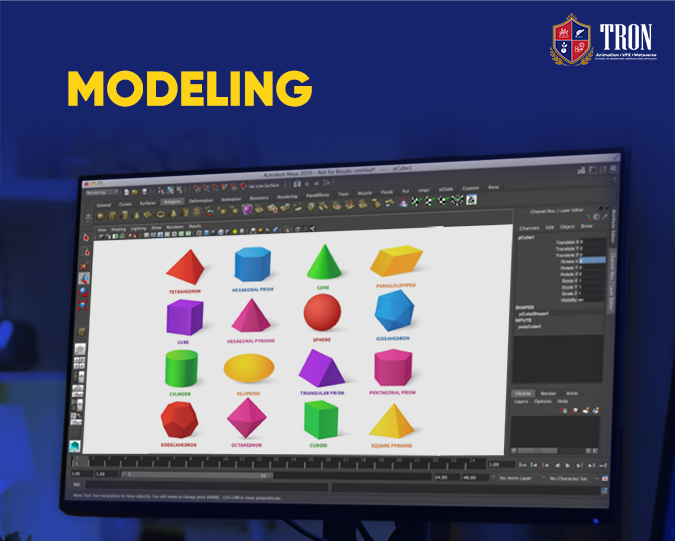
2. Rigging:
3D Rigging creates a skeleton for the 3D model. Rigging allows a character’s body to be articulated in a structured way. Trying to animate a character without it would result in a distorted, deformed mess.
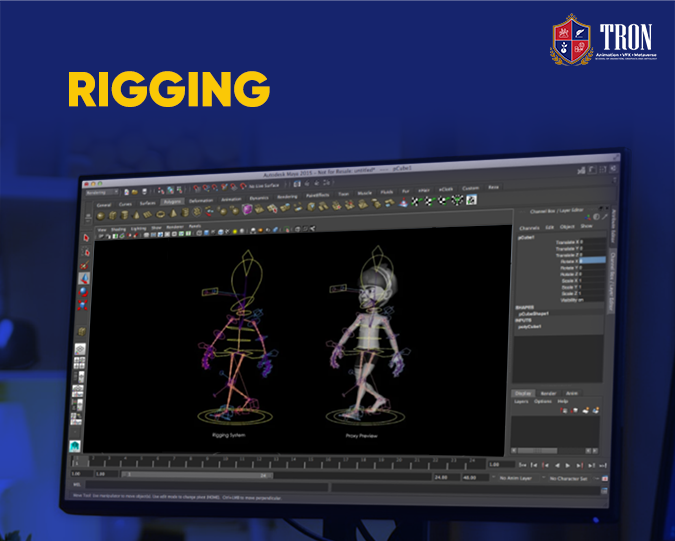
3. Layout and Animation:
Once the above steps are complete, the 3D animator will move on to the actual Animation process. After modeling and rigging, they have a character or an element they can move. There are multiple ways to do this – from using keyframes – moving the object on a frame-by-frame basis, to using motion capture data.
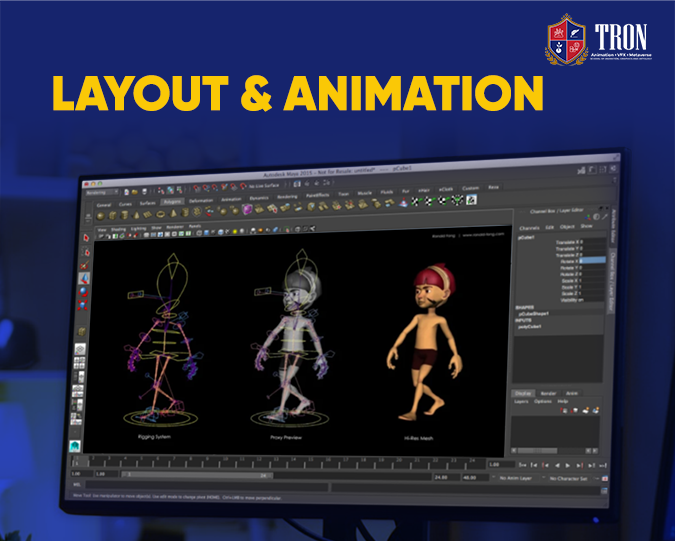
4. Rendering:
Once the animation is done and perfected, along with the lighting and dimensions, the animator can move on to rendering. The graphic images are designed and exported in this process. The final render of the 3D animation will be tweaked according to light and shadows, reflections, transparency and other minute details.
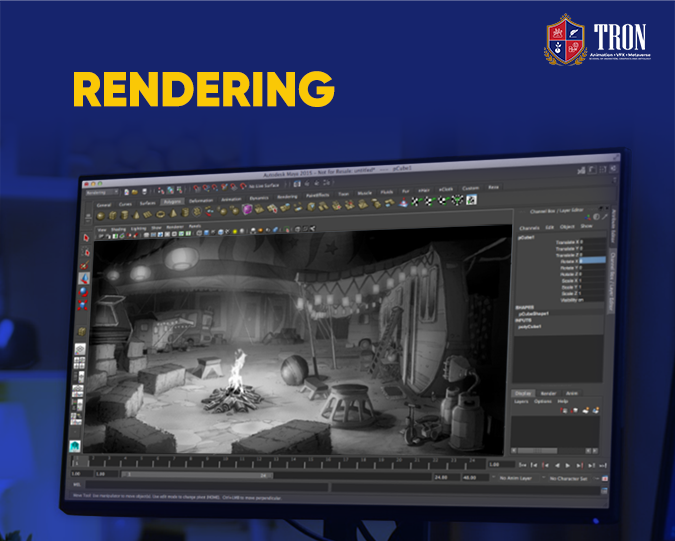
What are the Principles of Animation?
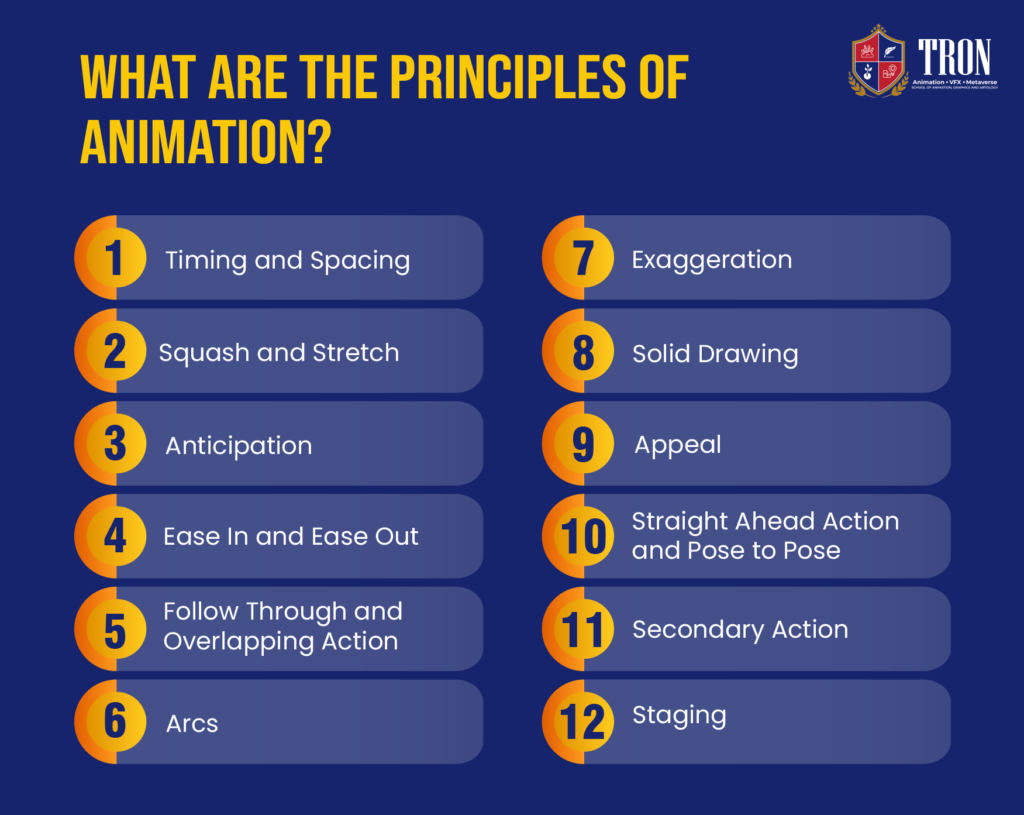
The principles of Animation are the crucial techniques one must practice and master as an animator. These principles adhere to the basic laws of physics and emotions and appeal.
What are the Uses of Animation?
3D Animation was first used in movies, TV shows and video games. But now, with digital platforms being used far and wide, 3D animation is being used widely beyond these contexts. From 3D animated advertisements and company profiles to medical imaging and architectural designs, 3D Animation is used across multiple industries and for many different purposes. Here are the most common uses of 3D animation today:
1. TV and Movies:
3D animation is most commonly used for character animation in TV shows and movies. The animated version of the characters makes them seem more lifelike, easier to connect with, and easier to evoke emotions from.
We see a lot of 3D animated characters in kid’s entertainment shows and movies. Elements of any story, like Coco walking across the Marigold Bridge, become more enchanting and beautiful to watch.
Link: https://www.youtube.com/watch?v=t9Dn4YrJGak
3D animated characters that sing, dance, fly, and twirl around also greatly impact. Facial expressions are also very touching and have the ability to move you.
2. Gaming
One of the best parts about gaming is feeling as if you are the one playing the game. 3D characters and environments help us get fully immersed in the game’s world and can intensify the action and drama for the player. When battling an enemy, or racing to save yourself, having a 3D sensation can make all the difference in the world.
The Last of Us is a great example of this, amplifying the character expressions, gestures, and environment the characters are in.
Link: https://www.youtube.com/watch?v=1xez4_pcJ_8
3. Marketing
3D animation has also proven to be very useful in Marketing. You can successfully depict product features as they appear in real life, and create captivating content through compelling video ads and logo designs.
Having a visually appealing and stimulating element in Marketing content is always a good idea, as it captures the audience’s attention and keeps them hooked.
This JBL ad has a speaker flying through the air, moving through water and showcasing the product’s best features. What’s not to love?
Link: https://www.youtube.com/watch?v=N7XUVK1Cnzk
4. Architecture and Interior Design.
Many design firms incorporate 3D animated designs and structures into their design process. 3D animations come in handy while creating life-like renderings of what the building or interior design would like before it is constructed.
Combined with VR and AR tools, designers can fully experience what their creations could eventually look like.
5. Medicine
In medical institutions and hospitals worldwide, doctors are now using 3D animation to teach, show detailed imagery of the human body, and can demonstrate medical techniques as well. In areas that are hard to understand, like surgery, 3D animation is invaluable.
3D animation also comes to great use for patient care. Communicating what to expect regarding a medical procedure and helping reduce anxiety is a big part of 3D animation’s uses in the medical field.
6.Simulations
3D animations can be used in simulations across an array of fields. Simulating an environment to understand situations better or immersing yourself in Virtual Reality (VR), 3D animation plays a huge role in each of these.
What is the Salary of a 3D Animator?
In India, the salary of a 3D animator varies on the factors mentioned above which are education, experience, portfolio, companies, location and job roles.
The average salary of a 2D and 3D Animator is 3.0 lakhs per annum. For a more detailed analysis, check out Animator Salary in India in 2023.
What are the advantages and disadvantages of 3D animation?
Like any field, 3D animation also has both advantages and disadvantages.
Advantages of 3D Animation:
1. Flexibility:
As an animator, you only need your laptop and your imagination. You can work from anywhere in the world. There is also a lot of flexibility with the scope of work you can take a crack at. You can work in movies, marketing, TV shows, etc.
2. Realism:
The technology developed today has made photorealistic renders of your animation possible. You can see your work come to life.
3. Depth:
There is no limit to what you can create. The depth of opportunities is limitless. Everything you create can be reused, recreated and reimagined.
Disadvantages of 3D Animation:
1. Time-consuming:
As you have read above, 3D animation is not a single-step process. Each animation takes ample time from creation to completion.
2. Expensive
Creating 3D animations is also an expensive process. With all of the tools and technologies required, it is not possible for it to be done in an inexpensive way.
3. Technical Expertise
For you to be an expert animator, its imperative that you understand every tool and stage really well. The basics need to be absolutely clear before you can delve into actual 3D animation.
Difference between 2D and 3D Animation
In a 2D animation, all of the images look flat. They are created on the x-axis (horizontal) and the y-axis(vertical), while 3D animations include a critical 3rd axis, the z-axis (depth). Old-school Disney animated movies like “Snow White” and “Bambi”, are created using 2D Animation. In contrast, “Coco” and “Moana” offer examples of 3D animation.
Read about the Differences between 2D and 3D animation in depth.
The Future of 3D Animation
The Future of 3D animation looks very bright and full of possibilities. Technologies are only evolving, and new ways of incorporating 3D Animation into our work and different industries will continue to materialise.
Conclusion
To conclude, 3D animation is a subject that is very deep and full of intricacies. Not only is it important to understand theory and the tools that are required for it, it is also very important to develop a creative and imaginative mindset.
Tron Education makes sure that you are given the right amount of exposure to creative labs, software and state of the art infrastucture, ensuring you are ready for fast paced world of 3D Animation.
With multiple courses in 3D animation, Tron Education guarantees an excellent foray into 3D Animation.
Reach out today!
FAQs
1. What is 3D Animation?
3D Animation is the art of using motion to bring characters and elements to life. This creates an illusion that these elements are moving through 3 Dimensional space.
2. Is 3D Animation easy?
3D Animation is a very creative and technical career and subject. It requires a lot of dedication and an understanding of animation tools.
3. What software are used for 3D Animation?
Software such as Adobe Photoshop, Blender, Render Man, and Animate are used to create 3D Animations.
4. What is the Salary of a 3D animator?
In India, the salary of a 3D animator varies on the abovementioned factors: education, experience, portfolio, companies, location and job roles. The average salary of a 2D and 3D Animator is 3.0 lakhs per annum.
5. Difference between 2D and 3D animation?
In a 2D animation, all of the images look flat. Example: Disney’s “Snow White”. 3D animations include a 360-degree view of characters and the environment. Example: “Frozen”.
